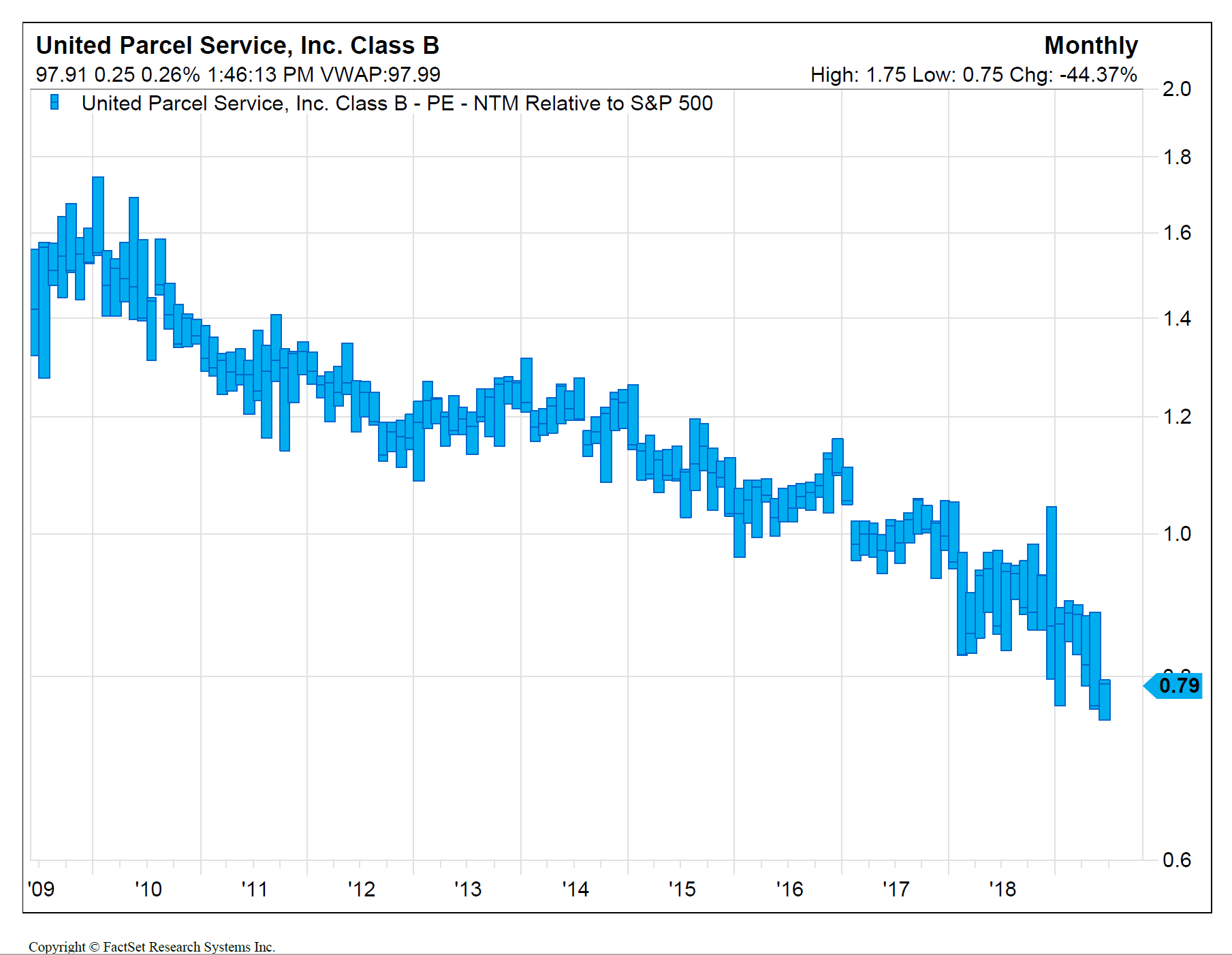United Parcel Service, Inc. (UPS): An Exceptional Business for an Unexceptional Price
Business Description
Why do we own it?

-
Ecommerce: one of the biggest impacts is going to be the continued growth of online shopping- currently only 10% of US retail is online and this number continues to grow rapidly each year.
-
International: Growth rates outside of the US are even higher, particularly in Asia where consumers have embraced Ecommerce much more quickly.
-
Healthcare: while not a market many people typically think about, the healthcare package delivery market is expected to grow to $105 billion by 2021. UPS have made acquisitions in this space and are well positioned to benefit from this trend.

-
Capital/ Logistics: The capital and logistics required to re-create UPS’s network scale are staggering. Yes, Amazon effectively operates with zero cost of capital, but even so the spend and time required is enormous, which is why UPS’s returns have been so well defended historically.
-
Inefficient model: There is a chance that Amazon is already going down the wrong path with the franchise model- similar to what FedEx did. It allows fast growth, but it leaves these businesses with an inefficient network that can’t be optimized. UPS’s advantage in owning all its routes is substantial.
-
Customer risk: There are many customers (Walmart, Target, retailers in general) who will likely be reluctant to use an Amazon delivery service as it would give their main competitor a huge amount of information about their sales. This could limit Amazon’s ability to compete in some retail focused markets.
-
Last mile is not highly profitable: Amazon may expand sufficiently to take the attractive high drop city routes while leaving a lot of the less desirable rural routes to UPS and FedEx. Obviously, this isn’t great if it means UPS get left with just the less profitable routes- but it does place a cap on how far Amazon might go in this market.
-
Amazon is being forced to expand, whether they want to or not: Amazon have run into problems previously as a lot of their volume occurs at peak times, and a lot of it is small unprofitable packages. Both UPS and FedEx have refused to build out certain elements of capacity when asked by Amazon, as they don’t see them as profitable. As both have pulled back, this has meant Amazon has been forced to build out some capacity themselves in order to maintain their customer service, whether that was their long-term goal or not.
Disclosures: This website is for informational purposes only and does not constitute an offer to provide advisory or other services by Globescan in any jurisdiction in which such offer would be unlawful under the securities laws of such jurisdiction. The information contained on this website should not be construed as financial or investment advice on any subject matter and statements contained herein are the opinions of Globescan and are not to be construed as guarantees, warranties or predictions of future events, portfolio allocations, portfolio results, investment returns, or other outcomes. Viewers of this website should not assume that all recommendations will be profitable or that future investment and/or portfolio performance will be profitable or favorable. Globescan expressly disclaims all liability in respect to actions taken based on any or all of the information on this website.
There are links to third-party websites on the internet contained in this web-site. We provide these links because we believe these websites contain information that might be useful, interesting and or helpful to your professional activities. Globescan has no affiliation or agreement with any linked website. The fact that we provide links to these websites does not mean that we endorse the owner or operator of the respective website or any products or services offered through these sites. We cannot and do not review or endorse or approve the information in these websites, nor does Globescan warrant that a linked site will be free of computer viruses or other harmful code that can impact your computer or other web-access device. The linked sites are not under the control of Globescan, and we are not responsible for the contents of any linked site or any link contained in a linked site. By using this web site to search for or link to another site, you agree and understand that such use is at your own risk.






